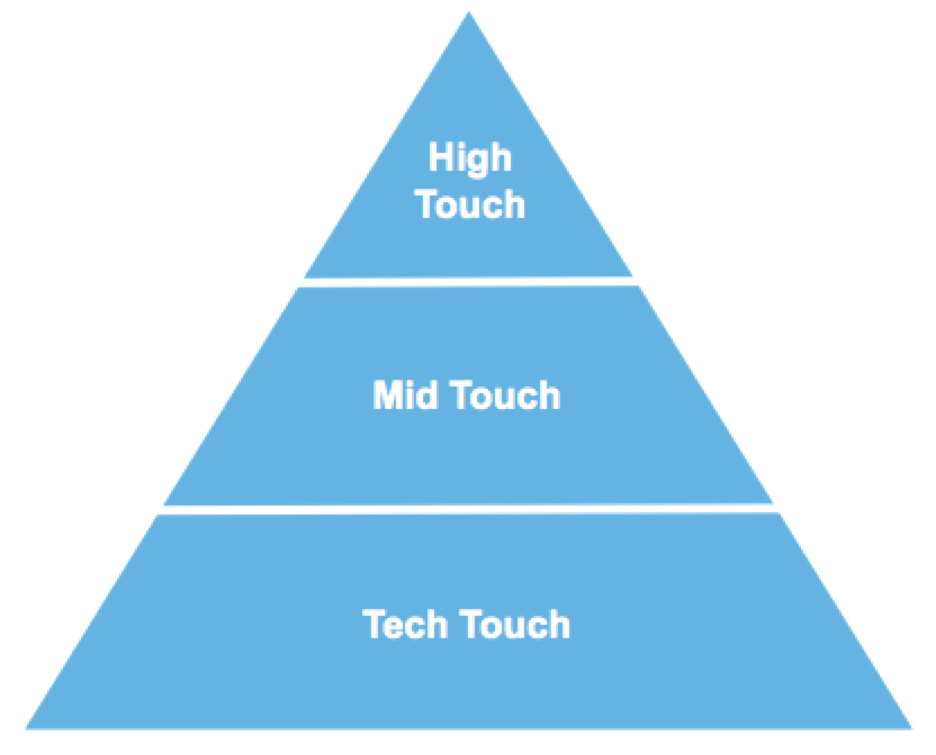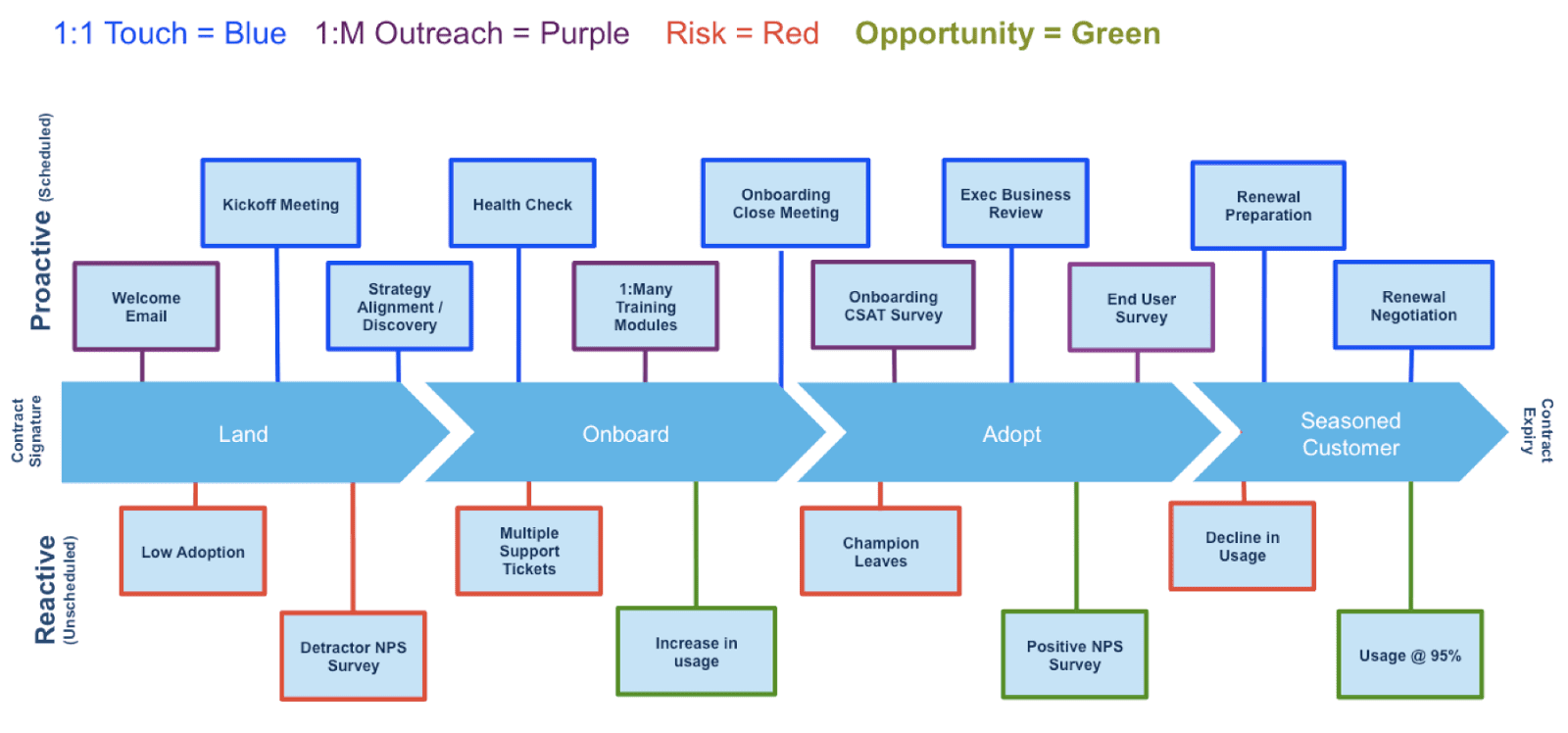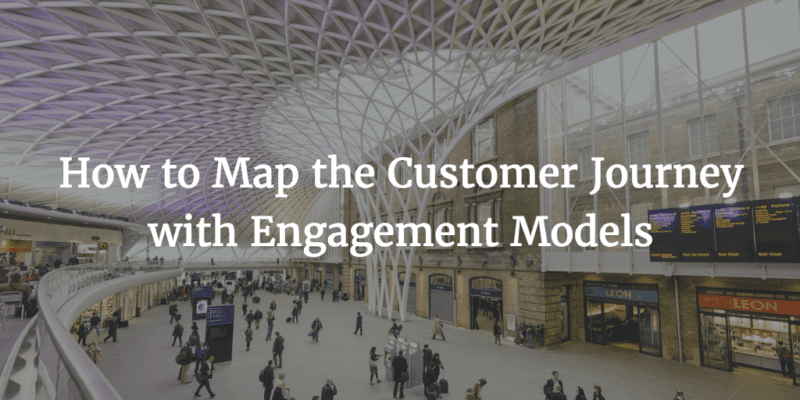Dan Steinman is the General Manager of Gainsight EMEA, and is based out of London, UK. He leads Gainsight’s regional growth initiatives from the company’s regional headquarters located in London and helps Gainsight’s European customers successfully understand and adopt Customer Success technology.
The customer journey has been drawn into the spotlight in a new way over the past few years as part of the Customer Success movement. But understanding and mapping the customer journey is not new. It’s been an integral part of the Customer Experience (CX) playbook from the very beginning. How can you improve the customer’s experience and deliver on outcomes if you don’t fully understand the customer’s entire process with your company?
The emergence of the recurring revenue business model has created a very different sense of urgency for mapping the customer journey. The goal is no longer to simply improve a certain aspect of the customer’s experience, but to closely monitor and actively manage every aspect of their journey. If done well, this will have a direct bottom-line financial impact for your company.
With that new goal in mind, the desired outcome of mapping the customer journey also changes. We no longer want to understand the journey retroactively in order to improve it for the next customer. Instead, we want to proactively intervene in the process to improve it in real-time for each customer. In fact, that is the basic definition of Customer Success.
To this end, the activity is no longer to map out the optimal customer journey. It is to create and then operationalize the customer lifecycle so that it delivers the desired outcome for your customers and, ultimately, the financial results for you.
Learn More | Customer Success Conversations Podcast
In Adam Joseph’s podcast series, he interviews Dan Steinman and discusses when to adopt a Customer Success technology, what key metrics are vital to understanding customer health, how Gainsight helps CSMs stay proactive, and more. Tune in and listen here.
At some point, every company learns an important lesson: All customers are not created equal. We may wish they were and we may even pretend that we’re going to treat them all the same. Ultimately, some customers are bound to get special treatment, often based simply on the amount of money they spend. At some point, especially in a recurring revenue business, segmenting your customers becomes a financial necessity. You just can’t spend as much time (money) managing a £1,000 customer as you do a £1,000,000 customer. This segmentation will often roughly look like this:

The key factor in this type of segmentation is the engagement model, or touch model, as we often call it. That’s what the terms “High Touch,” “Mid Touch,” and “Tech Touch” in the above diagram refer to, and it’s also what defines the type and frequency of the planned interactions with your customers.
There are two distinct aspects to the customer lifecycle:
- Date-driven (or scheduled) events: These are the regularly scheduled interactions with your customers which can be mapped out on a calendar. For a given client, these might include:
- Weekly sync meetings
- Monthly updates
- Quarterly Business Reviews (QBRs)
- Annual on-site visits
- Data-driven (unscheduled) events: These are events that you know are highly likely to happen but you don’t know when. You can also think of these as behavior-driven events. Some examples are:
- Low score survey response
- High score survey response
- Too many Support tickets
- 20% drop in usage
- Invoice overdue


As you can see from this list, these events can be either positive or negative—opportunities or risks. You can begin mapping out these behavior-driven events simply by completing this statement: “I’d like to know whenever a customer does or does not do X.”
Another approach is to brainstorm with those who understand your customers and ask this question: “What does a healthy customer do every day/week?” The converse of this question is equally important: “What does an unhealthy customer do or not do every day/week?”
Over time and with the right systems in place, you’ll be able to analyze these behaviors and questions mathematically, but it’s often a very good start just to approach it anecdotally. The right people in your business have a pretty good sense of what makes for a healthy or unhealthy customer.
The combination of the two sections provides the complete lifecycle for a customer.

As you can also see from the diagram, there are three variables in play here:
- Date-driven or data-driven (scheduled or unscheduled)
- Positive or negative (opportunity or risk)
- 1:1 touch or 1:many touch (manual or automated)
For your high-touch customers, all of these events may very well be handled manually via a face-to-face meeting, phone call, or personal email. As you move down the pyramid to other segments, you can use the same lifecycle as a starting point and then use these levers to reduce costs:
- Elimination – What events can you remove?
- Frequency – What events can you do less of?
- Automation – What events can you automate?
Once you’ve mapped out the touch model for each of your customer segments, you have the foundation for running your customer organization. This engagement map across segments will be useful for:
- Estimating headcount needs
- Making retention assumptions and forecasting
- Engaging executive management in the customer process
In short, your engagement model also becomes your financial model for running your organization. With this in hand, when your CFO tells you that you can have only seven of the 10 additional heads you requested, you can lay out your model in front of him and ask him to participate in helping you decide which of the events/touches he thinks you should eliminate or where the frequency should be reduced and what the resulting increase in churn might be because of that decision.
In summary, by all means, map your customer journey. In this new “Age of the Customer,” it’s an absolute necessity. But first segment your customers and then create a journey/engagement model for each segment that you can operationalize.
In other words, define your engagement model with an eye towards automating it at some point, even if you can’t do it now. Don’t build un-scalable processes into your lifecycle. At some point, it will all likely get systematized, so begin the process with this end in mind.
And that’s the First Pillar of Customer Success:
- Operationalize the Customer Lifecycle.
- Manage Customer Risk
- Demonstrate Value
- Drive Expansion and Advocacy
- Enable Cross-Functional Visibility
Stay tuned for more discussion of the other four:

